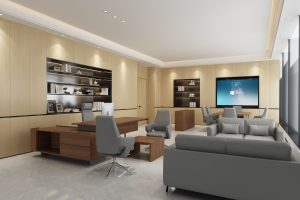The Middle Eastern furniture market is experiencing remarkable and unique growth, driven by economic development and changing consumer preferences. This region has become an increasingly important player in the global furniture industry. According to Statista, Saudi Arabia's furniture market is expected to reach $8.34 billion by 2025, growing at a compound annual growth rate (CAGR) of 1.12% through 2029. Living room furniture, being the largest segment, is projected to contribute $2.73 billion by 2025. A growing demand for traditional-style furniture that reflects Saudi Arabia’s rich cultural heritage is evident, showing the strong connection consumers feel to their culture.
Similarly, the UAE is also showing impressive market growth. The UAE furniture market is expected to reach $3.89 billion by 2025, with a CAGR of 0.89%. Despite this lower growth rate, the UAE has a high per capita expenditure on furniture, reaching $401.90, reflecting strong demand for luxury and custom-made products.
Living Room Furniture: A Blend of Culture and Luxury
In Saudi Arabia, living room furniture is not just a functional part of the home; it is a place for family gatherings and an expression of cultural identity. By 2025, the country’s living room furniture market is expected to surpass $2.73 billion, with a steady growth rate of 0.90%. Traditional Arabic-style furniture remains a top choice, beloved for its ornate designs and cultural significance. This growing demand reflects Saudi consumers’ deep connection to their culture and their desire for a luxurious lifestyle.
In the UAE, the living room furniture market is also thriving. It is expected to reach $1.02 billion by 2025. Consumers in the UAE are increasingly focusing on premium design, with a strong emphasis on material quality, brand, and intricate design details. Furniture in this market is seen not just as functional but as a status symbol, with bespoke, high-end pieces in high demand.
Bedroom Furniture: The Rise of Quality and Design
Saudi Arabia’s bedroom furniture market is expected to see significant growth, with projected revenue of SAR 1.4 billion by 2025. The annual growth rate is estimated at 2.24%. As disposable incomes rise, Saudi consumers are placing more importance on high-quality bedroom furniture that combines top-tier materials, craftsmanship, and elegant design. This trend highlights the desire to create a comfortable, personalized space that reflects individual taste.
The UAE’s bedroom furniture market is also growing rapidly, with expected revenue of $686.5 million by 2025. Driven by consumers’ increasing demand for comfortable and stylish living spaces, UAE residents are seeking luxury bedroom furniture that complements their personal taste and social standing. The demand for unique, well-crafted pieces in this segment is a key market driver.
Kitchen and Dining Furniture: Luxury and Functionality
Saudi Arabia’s kitchen and dining furniture market is set to reach $580 million by 2025. This reflects the country’s growing consumer demand for elegant and functional home designs. Popular categories like dining tables, kitchen islands, and cabinetry are showing a marked rise in demand, indicating a strong desire for high-quality, stylish furniture that enhances dining and kitchen spaces.
In the UAE, the kitchen and dining furniture market is also expanding. It is projected to reach $498.8 million by 2025, with a stable annual growth rate of 0.88%. Similar to Saudi Arabia, there is growing demand for high-end kitchen and dining furniture, driven by affluent consumers eager to decorate their homes with stylish and luxurious pieces. Despite high market saturation with dining tables, kitchen islands, and cabinets, the market continues to grow steadily, fueled by ongoing interest in fashionable and functional home furnishings.
Conclusion: The Promising Future of Middle Eastern Furniture
The demand for premium living standards is significantly driving the Middle Eastern furniture market. Furniture is no longer just a functional item; it represents cultural identity, personal taste, and luxury. As disposable incomes continue to rise and consumers demand higher quality products, the region’s furniture market is set for sustained growth.
Saudi Arabia and the UAE are at the forefront of this trend. Their expanding markets and evolving consumer needs present substantial opportunities for furniture manufacturers and designers. The focus on luxury, customization, and cultural relevance in furniture design will continue to propel the Middle Eastern furniture market, ensuring that it plays a vital role in the global industry’s future.
As we look toward 2025 and beyond, the Middle Eastern furniture market, particularly in Saudi Arabia and the UAE, will remain a key focus for global industry players. The ongoing demand for high-quality, luxurious, and culturally relevant furniture will continue to shape the region's dynamic and rapidly growing market.






